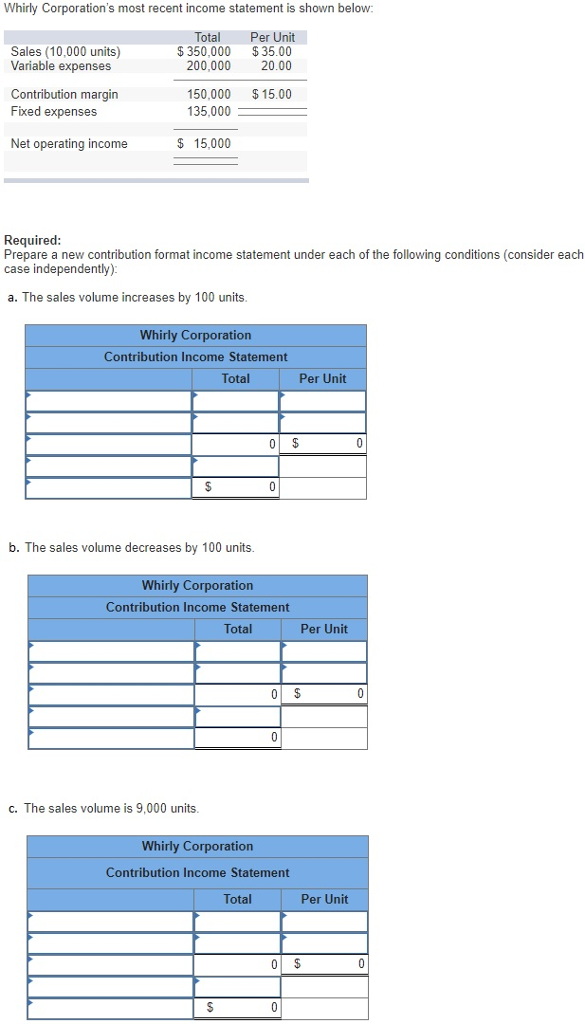
It reflects the portion of each dollar of revenue that is available to cover fixed costs and contribute to net profit after variable costs have been paid. The contribution margin is a cost accounting concept that lets a company know how much each unit sold contributes to covering fixed costs after all variable costs have been paid. It can be calculated on a per-unit basis, or as a ratio, often expressed as a percentage. The operating margin measures how much profit a company makes on a dollar of sales after paying for variable costs of production, such as wages and raw materials, but before paying interest or tax. It is calculated by dividing a company’s operating income by its net sales. Higher ratios are generally better, illustrating the company is efficient in its operations and is good at turning sales into profits.
Analysis and Interpretation
As a result, a high contribution margin would help you in covering the fixed costs of your business. This concept helps companies make decisions about whether to add or subtract a product line, to price a product or service, to determine the optimal mix of products, and to calculate the breakeven point. In the dynamic world of business, understanding key financial indicators is essential for effective decision-making. This financial concept plays an indispensable role in determining the profitability of individual items sold by a company and informs critical decisions about pricing, production quantities, and product lineups.
Income Statement
The contribution margin ratio of 45.4% for the company as a whole is determined as follows. The following sales and production information will be used to show comparisons of the contribution margin for a company as a whole, by region, and by product. We’ll next calculate the contribution margin and CM ratio in each of the projected periods in the final step.
Understanding AI in Finance and Its Impact on Businesses
To cover the company’s fixed cost, this portion of the revenue is available. After all fixed costs have been covered, this provides an operating profit. By comparing EBIT to sales, operating profit margins show how successful a company’s management has been at generating income from the operation of the business.
- Therefore, the only logical cost of production remains the variable cost.
- While the former considers only variable costs, the latter takes into account both variable and fixed costs.
- When comparing the two statements, take note of what changed and what remained the same from April to May.
- Net profit margin takes into account all costs involved in a sale, making it the most comprehensive and conservative measure of profitability.
- It gives a business an idea of generating sufficient revenue that covers all operating costs.
6: Contribution Margin Analysis
The following table compares six projections based on different data. In the Dobson Books Company example, the total variable costs of selling $200,000 worth what is a leasehold of books were $80,000. Remember, the per-unit variable cost of producing a single unit of your product in a particular production schedule remains constant.
Use of Contribution Formula
While there are plenty of profitability metrics—ranging from the gross margin down to the net profit margin—the contribution margin metric stands out for the analysis of a specific product or service. The contribution margin (CM) is the profit generated once variable costs have been deducted from revenue. Thus, the concept of contribution margin is used to determine the minimum price at which you should sell your goods or services to cover its costs. Direct Costs are the costs that can be directly identified or allocated to your products. For instance, direct material cost and direct labor cost are the costs that can be directly allocated with producing your goods. So, you should produce those goods that generate a high contribution margin.
Therefore, the unit contribution margin (selling price per unit minus variable costs per unit) is $3.05. The company’s contribution margin of $3.05 will cover fixed costs of $2.33, contributing $0.72 to profits. The contribution margin is important because it helps your business determine whether selling prices at least cover variable costs that change depending on the activity level. Knowing your company’s variable vs fixed costs helps you make informed product and pricing decisions with contribution margin and perform break-even analysis.

If the contribution margin for an ink pen is higher than that of a ball pen, the former will be given production preference owing to its higher profitability potential. Assume that a retailer had sales of $400,000 and its cost of goods sold was $250,000. The retailer’s variable selling and administrative expenses were $30,000 and its fixed selling and administrative expenses were $100,000. In May, \(750\) of the Blue Jay models were sold as shown on the contribution margin income statement.
In other words, operating income refers to the sales generated through production of products (or offering services). Operating income is the revenue minus operating expenses of a company. It is the revenue generated by a business from its operations directly.
Profit margin is calculated using all expenses that directly go into producing the product. The contribution margin shows how much additional revenue is generated by making each additional unit of a product after the company has reached the breakeven point. In other words, it measures how much money each additional sale “contributes” to the company’s total profits. Fixed costs are costs that are incurred independent of how much is sold or produced. Buying items such as machinery is a typical example of a fixed cost, specifically a one-time fixed cost.